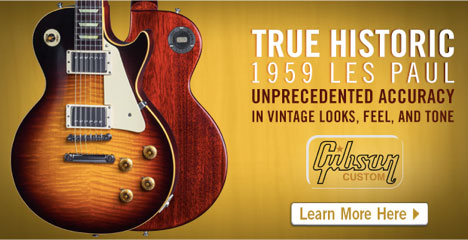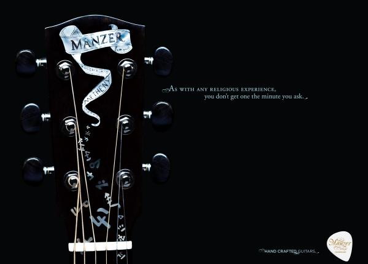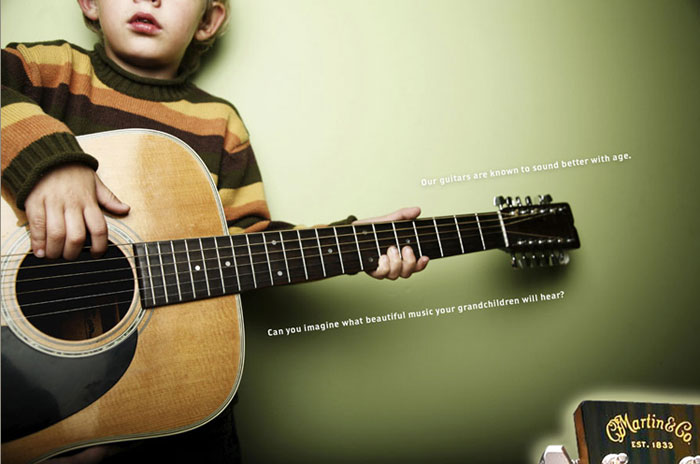Iconic guitar maker Gibson went bust last week. Here, Tom Dougherty of Stealing Share looks at the science of guitar branding.
The market for buying a guitar – whether an electric or an acoustic – is incomprehensibly vast. At one end of the spectrum are guitars intended for the novice player. These instruments allow buyers to dip their toes into the musical waters and while playable, they are not worthy of passing down the family tree. Such guitars include acoustics like the Yamaha acoustic line and the Gibson Epiphone and electrics like the Fender Squier and Peavey line.
The opposite end of the spectrum consists of intricate, handmade models, rendered from the finest woods from around the world. These guitars are priceless and sound exquisite. They are statement pieces often placed on display or for the professional touring and recording musician. In the middle rests a tier of moderately expensive guitar branding.
These guitars are very worthy of maintaining for a lifetime; acoustics, like Martin, Guild or Taylor and electrics like Rickenbacker and Gibson Les Paul fall into this category.
Certain guitar branding practices have a better connotation than others: there’s an elite group of guitar brands widely accepted to be the best of the best within the market. One reason is that the guitar manufacturer has a history of making instruments with great tonality. They are conditioned to withstand a lifetime of bumps, bruises and scrapes – and most importantly, playing.
The history of the manufacturer is important. Nobody wants a guitar if they know its truss rod is going to bend to the point of collapse or if its bridge comes flying off due to faulty gluing. What a buyer wants is a beautiful instrument that they can make beautiful music with.

Just look at Martin & Co’s homepage to see the value it places on nostalgia, and how paying homage to that helps to provide a story for the instruments it makes. Or this advertisement for the Gibson Les Paul, which honors the 1959 model.
Within the music industry it is a common view that the past is better than the present. It’s why some musicians continue to record on reel-to-reel-tape (even though it’s a longer, more challenging and expensive process) and to mic their instruments from a vintage tube amp rather than plugging in directly for preprogrammed vintage sounds.
There is value in celebrity endorsements too, but the deeper connection between the company producing the guitar, the celebrities endorsing them, and the consumer remains the heritage of the company – referring back to who played a particular guitar, and when, to get to the heart of the musically conscious consumer.
It is banking on the fact that you will want to buy a guitar that has history on its side – one that the legends have had by their side, too.
Great guitar companies also tell how they make their guitars. It is an important part of guitar branding – the search for ideal and sustainable wood that can crafted be into the finished product. When in the market for a Taylor guitar, for example, you can search according to different facets of the construction process.

Most guitar branding only uses these three components in advertising, but this is to miss what a musician is really seeking: to fall in love with their instrument. Too many ads are primarily about the brand or the about celebrity endorsing it. Right now, everyone is selling a portion of what they should, but foolishly, hardly anyone is doing what’s right: selling to the emotional triggers of the musician.
One manufacturer on the right track is Manzer. This ad works because it focuses on the experience that the guitarist is going to have with a Manzer guitar. A beautifully made guitar, when played, can make a guitarist feel like they have transcended the world around them
This print ad for the Martin & Co. company also hits the right stroke as the Manzer ads do.

Guitarists have a sense of allegiance to their primary guitar. Here, Martin recognizes that most guitarists want a lifetime friend in their guitar and that, as it ages, that friendship will deepen (this is why Willie Nelson continues to play his beat-up guitar).
Guitarists believe in superstition, like a basketball player does by wearing the same socks when they win. They believe in the emotional connection they have with their instrument.
That’s why it doesn’t matter is you are a beginning guitarist or if you’re a pro, you want to be a part of this collective musical story.
That guitar holds a special place in the heart of the guitarist. It’s their baby. They love it. They bond with it. This should be the ingredient most used when companies market their guitars.
What does the guitarist aspire to be? Without cluing into this, we’re left with nondescript advertising that does little to move the heart strings.
This article was originally published in longer form on the Stealing Share website as Guitar branding. A market study.

